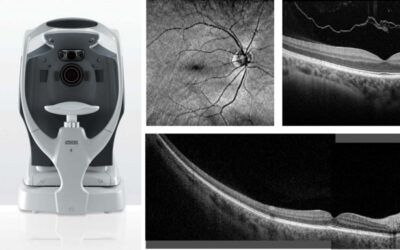Licence to drive: seeing eye to eye with the road
YOUR EYES NEED A WARRANT OF FITNESS TOO
Driving requires your full concentration. Your eyes need to be able to do several things at once, including: seeing what’s coming up on the road, processing threats from the sides or periphery, and scanning your mirrors. It is extremely important to have good visual acuity so you can see sharply in the distance.
Some people may become short sighted, which means they cannot see as well in the distance – this most commonly happens from your teens up to your mid-twenties, but may happen at other times, too.

NEED A “WOF”? TEST YOUR EYES AT HOME
20/20. Not just the numerical standard for perfect vision, but also a good reminder of why we need eye tests.
Statistics show that one driver in five has a vision defect which may affect driving performance. Are you one of the 20%?
In a safe setting, find a license plate that is far away enough that you cannot read it. Walk towards it until you can just read it. Measure the distance; is the distance at least 20 metres?
If not, it’s worth getting an eye check. Especially if you have always had good vision or have not had an eye-check for a long time. Vision, after all, is essential for road safety. Most drivers can reach the standard necessary for safe driving with spectacles or contact lenses.
CRITERIA FOR THE LTSA STANDARD FOR DRIVING
Distance Vision
The ability to see clearly is obviously most important for safe driving. Even the simplest reactions take 0.4 seconds. If distance vision is poor, signs may not be seen until it is too late to react safely.
Stopping from 80 km/h takes four times the distance than from 40 km/h. The faster you travel, the less time you have to react to what is seen. Poor distance vision and excessive speed increase the risk of unreliable judgements with potentially disastrous results.
Your windscreen and spectacles should be clean and free of dust and scratches, which greatly reduce vision on bright days and at night. Scratched sunglasses, generally, should not be worn when driving.
Field of Vision
The ability to see out “the corner of your eye” is particularly important for the early recognition of cross-traffic, pedestrians and animals at the roadside without looking away from the road ahead. To ensure safe driving, the LTSA requires a minimum of 140º field of view for driving as a private motorist. Make the best use of your side and rear view mirrors, and keep them adjusted correctly.
Depth Perception
Passing other vehicles and changing lanes requires good judgement of distance, especially in busy traffic. A person with two eyes working together well has the most reliable depth perception.
Accommodation (near vision focusing)
A driver needs to look from the road to the dashboard and back again quite frequently. This ability to change focus from far to near is called accommodation. Over the age of 45, most people have gradually increasing difficulty with near vision and may require spectacles to see clearly.
Night Vision
Safe night driving requires the ability to see in low and variable light conditions. It also requires an ability to recover quickly from the glare of oncoming headlights. Glare recovery is best in drivers under the age of 30, and night vision deteriorates after the age of 40. Older drivers can compensate to some extent for this reduction in the quality of night vision by driving more slowly.
Eyes are much slower to adapt to night-time light levels following exposure to bright light. Being outdoors in the sun for only a few hours can slow the dark adaption process so that normal night vision may not be reached for several hours after dark. This temporary loss of night vision can be avoided if reasonably dark sunglasses are worn during the day. NEVER WEAR SUNGLASSES AT NIGHT.
Colour Vision
Colour plays an important part in road safety. Drivers must instantly recognise traffic lights, indicator signs, hazard warning lights and stop lights. People with colour vision defects may be slow reacting to red stop lights. Avoid the use of medium or dark blue sunglasses which can seriously interfere with some people’s ability to distinguish traffic light colours.
Older Drivers
Should an older motorist give up driving? Senior citizens must pay special attention to their driving ability. As long as physical health and vision permit, an older person should be able to continue driving to maintain mobility which is accepted as necessary for happiness and independence.
SAFETY TIPS BY THE NEW ZEALAND ASSOCIATION OF OPTOMETRISTS
- Wear your spectacles or contact lenses if they have been prescribed for driving
- Keep your windscreen, spectacles, sunglasses and lights clean
- Frequently look in your rear vision mirrors and scan the verges of the road while driving
- Avoid excessive speed and reduce speed if conditions reduce visibility
- Use your sun-visor on bright days, and consider having a pair of tinted spectacles made to your prescription
- Never wear sunglasses for night driving
- Don’t drive under the influence of alcohol or drugs
And remember, vision is your responsibility. Under New Zealand law, it is a driver’s responsibility to ensure that vision meets the LTSA’s eyesight standards. The law requires a person’s vision to be tested every time a licence is renewed. Studies show that for teenagers and those over the age of 50, there is a significant increase in the number of people who fail to meet the standards without corrective lenses.
When was your last eye exam? Are you unsure of whether your eyesight meets the LTSA standard? Please email Jenny at jenny@gp-optom.co.nz
Featured Posts
Focus on Paul Taylor Eyewear
Sometimes we don’t realise that the names behind our favourite brands are actually real people, or that they’re still not only alive but actively designing under the banner of their brand name….
New, Improved Optometry Equipment
Regulars to Greenlane Penrose Optometrist might notice a few changes and improvements during their next eye exam. We’ve been busy setting up new and exciting technology in the practice…
Address
Cnr Great South Road & Rockfield Road, Greenlane 1051
Phone
09 525 1516
Hours
Mon to Fri: 9am – 5pm
Sat to Sun: Closed
Holidays: Closed



